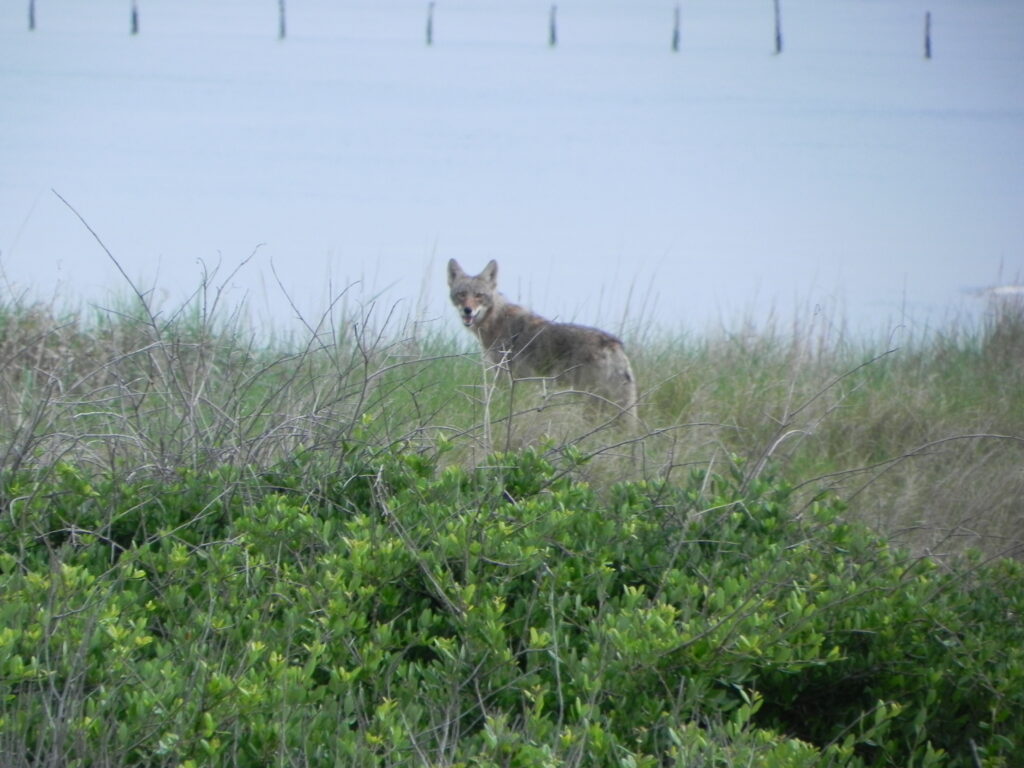
Photo courtesy of First Landing State Park
By Mary Reid Barrow
About 50,000 coyotes live in Virginia. Wherever you live, some are probably your neighbors.
The critters have even been seen in downtown Richmond, said Dr. Richard Groover, an environmental scientist who spoke on coyotes at the Virginia Beach Winter Wildlife Festival last week.
In Virginia Beach, coyotes live from the southern part of the City to First Landing State Park. They have been seen from Owl’s Creek Boat Ramp to Kempsville, from Red Mill Shopping Center, to Laskin Road.
“The amazing coyotes, residents everywhere” was the apt title of Groover’s talk. He is a faculty member in the Department of Environmental Science & Policy at George Mason University and has studied coyotes among many research projects.
You may see a coyote today and it’s gone tomorrow. Coyotes move around a lot, Groover told the audience. Power line rights-of-way, old farm roads and trails often serve as coyote highways.
“They will travel as much as five miles a day, based on food availability,” he explained. “They are very cautious, and don’t want to be seen and won’t hang around any place consistently.”
Coyotes eat everything from insects and mice to large animals like goats and sheep. Groover had one big warning to folks who live near coyotes and have cats or small dogs. Protect them.
“Small animals are at risk of being killed and eaten if they are outside alone, he said.
Coyotes also can get used to eating food, left out by humans. Later I talked to Jennifer Huggins, assistant manager of First Landing State Park. She asks that campers and folks who live near the park not to feed the coyotes or leave food out unattended and for campers to store their food properly.
Although you might not see these secretive critters, you might hear them. Coyotes howl at the sound of a police siren, Groover said, and he plans to use sirens to track the animals in one area he is studying.
(A friend, who lives in Chesapeake, told me recently that he hears coyotes howl when the train blows its whistle as it comes through his area.)
There is no such thing as a pure coyote any more Groover noted. If you want to call one a coydog or a coywolf or some such, you are probably right. Coyotes are canids, like wolves and dogs, and over time they have mated and had pups.
“The coyote was once pure, but no more,” Groover said.
Coyotes weren’t always in Virginia either. The animals started out in Mexico and the Southwest. As their primary predators, the timber wolf and mountain lion, began to die out, the coyote population grew and spread east. They arrived in the southwestern Virginia in the early 1970’s, he said.
Now they are here, there, and everywhere.
LRNow would love to hear your nature news. Whether it’s about unusual plants or critters you see on your walks or find on the beach or tales of good folks who care for the environment, let maryreid@lrnow.org know.